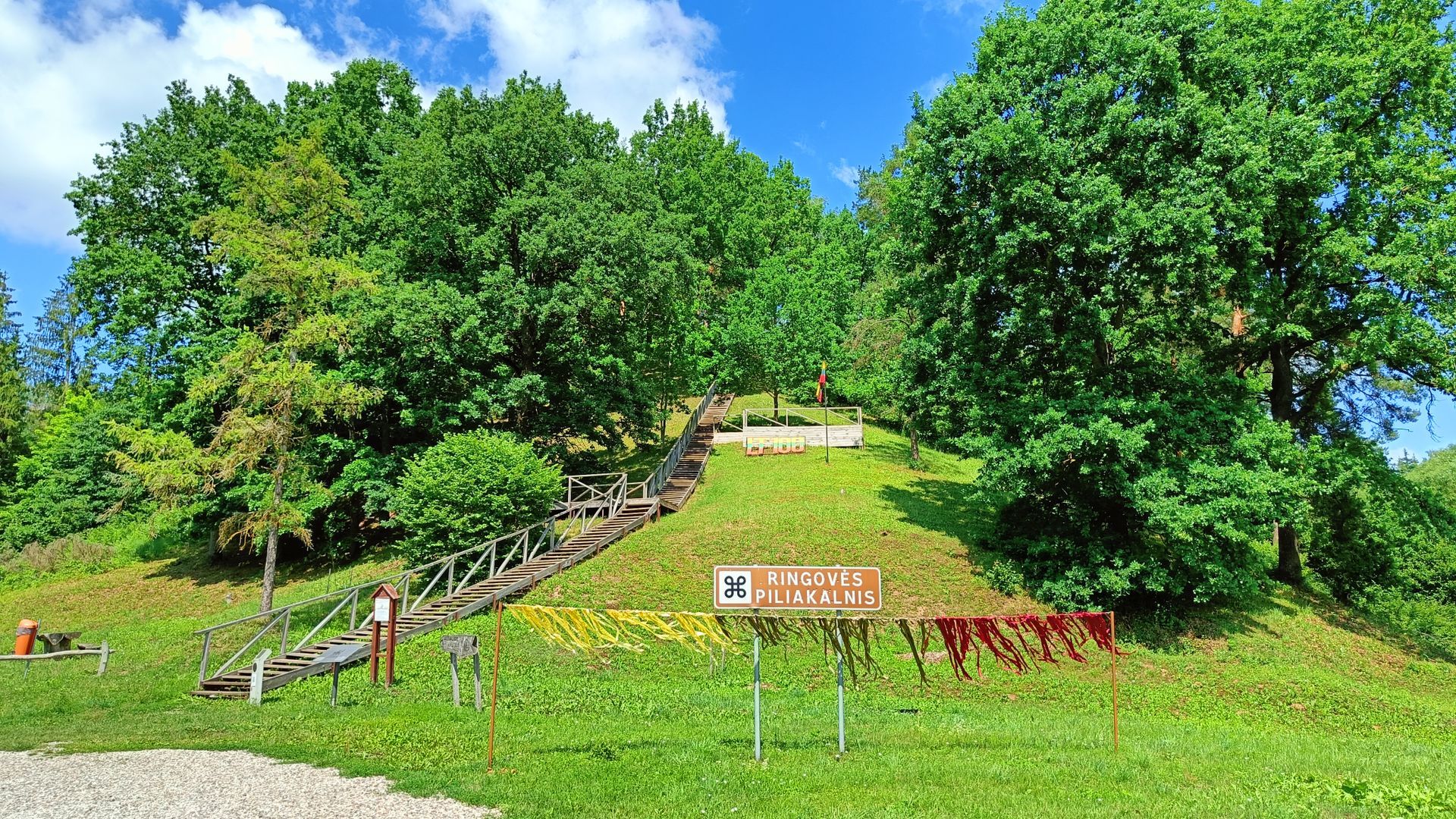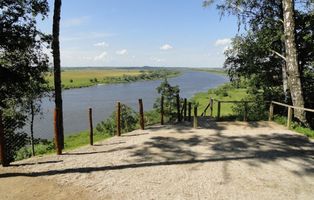
5 people was here
0 reviews
Lithuanian mounds have become witnesses of the national history from worshiping rituals of deities to fierce wars of crusaders. From ancient times, they have been considered mysterious places, surrounded by intriguing stories on priestesses, custodians of the holy fire and the castles that have withstood gigantic troops of enemies. Ringovė Mound, located in Kaunas District, makes no exception here.
Ringovė Mound, also known as the Small Castle or the Merry Hill, is located in the Ringovė entomological preserve, on the right bank cape of the Nemunas River, formed by the ravines of the Ringroad and Krestinava rivers. This mound, just like 1,000 other mounds calculated in the territory of Lithuania, is an important heritage of the Pagan Baltic culture. During festivals the pagan fire is lit up in the credence located on its top.
Different sources mention that in 1364 this was a place of the Ringė Castle, which was one of the links of the Nemunas defensive line. Steep slopes of 20-30 metres have perfectly guarded the castle from enemies. However, the fortress has not survived, and when climbing the Ringovė Mound one is welcomed by the white "Angel of the Native Land" with glorious Pillars of Gediminids at its chest.
We must have not even given a thought about the significance of the mounds on the history of Lithuania: they are considered to be the first national instances of monumental architecture made of ground and wood.
According to the archaeologist dr. Gintautas Zabiela, the mounds are "a rich source of knowledge on the past, to the residing in the vicinity it often is the oldest corner of the homeland, to the tourist it makes a spectacular mountain with beautiful views and to the curious one it is a place surrounded by stories and encouraging cognition".
© Nemuno kelias
Cultural heritage
Loading...
Loading...
Cultural heritage
RELATED ROUTES
©2025 trip.lt


